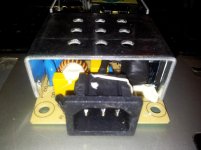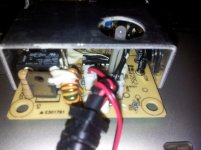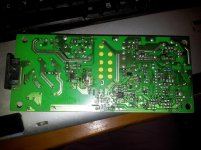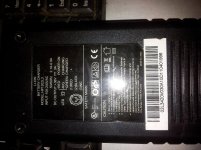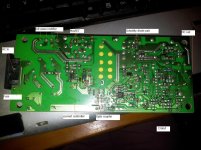I PM'd a member to ask how he went about repairing failed charger power supplies. I mean the ones that come in a black plastic box like a laptop power supply. I suspect that they output a stable source of 42V and the circuitry inside the battery [BMS] does all the cell balancing and special charging methods depending on the actual battery's lithium chemistry.
Anyway the member replied as follows and suggested I start a Topic.
the first thing is to make sure the board is getting power and the fuse is not blown, then look for the rectified DC on the input caps, which comes off the rectifier bridge. then look for voltage in the back end by measuring on the output of the schottky diode to see if the charger is pushing current into the back end.
open the chargers and take pictures too. but check for voltages first and if no voltage then see if the fuse is blown. that was the most common problem i found on all these charger returns i have here.
OK great, but when I had a look in one I could not recognise anything that looked like a fuse... so can anyone please tell me what size/shape/color component I should be looking for?
Anyway the member replied as follows and suggested I start a Topic.
the first thing is to make sure the board is getting power and the fuse is not blown, then look for the rectified DC on the input caps, which comes off the rectifier bridge. then look for voltage in the back end by measuring on the output of the schottky diode to see if the charger is pushing current into the back end.
open the chargers and take pictures too. but check for voltages first and if no voltage then see if the fuse is blown. that was the most common problem i found on all these charger returns i have here.
OK great, but when I had a look in one I could not recognise anything that looked like a fuse... so can anyone please tell me what size/shape/color component I should be looking for?


